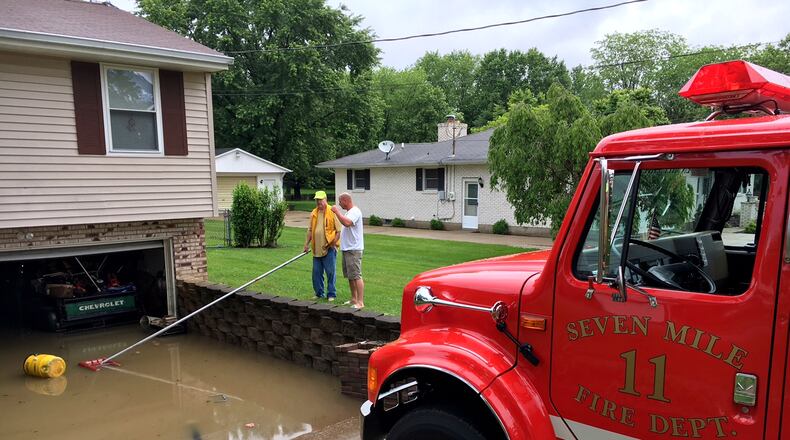DIY or contractor
The first decision is whether to perform the cleanup yourself or hire a contractor. The EPA said to exercise caution when choosing a contractor, and ask for qualifications, training and experience of the contractor in dealing with damage restoration, mold removal and drying out buildings.
If you see mold covering more than a 10-foot by 10-foot area, the EPA recommends hiring a trained professional to clean it up. This is especially true if the water was contaminated by sewage.
The EPA also recommends hiring a professional if you believe your HVAC system was affected by the flooding.
Cleaning safety
When you are cleaning and repairing the home, the EPA recommends wearing protective clothing like rubber gloves and boots, goggles without vent holes, an N-95 respirator, long pants and a long-sleeved shirt.
You may also need to shut off your electricity and gas, which could involve contacting power and gas authorities if electrical panels and gas meters are in the flooded area.
If you suspect a gas leak, call 911 immediately and leave the home.
Cleaning up
One of the first steps in cleaning up is to pump out or soak up any standing water.
The American Red Cross recommended pumping out flooded basements gradually, by about a third of the water each day, to avoid structural damage.
Avoid wading in floodwater, which could be contaminated or hide submerged power lines that could cause electric shocks. Also, don’t touch electrical equipment if it is wet or if you are in standing water.
The Red Cross said to throw out items that absorb water and can’t be cleaned or disinfected, such as mattresses, carpet, cosmetics and stuffed animals, as well as any food, drink and medicines that were exposed to flood waters, including canned goods, baby bottle nipples and sealed food containers.
If you see or smell mold, the EPA said you can wash mold off most hard surfaces with detergent and clean water. Avoid stirring up dust or scrubbing surfaces.
Finally, the EPA said to make sure to dry everything completely. The agency recommended, when safe to do so, to leave outside doors and windows open to keep air moving, open inside doors and cabinets, and remove drawers, shelves and built-in furniture to allow hidden surfaces to dry.
Setting up fans, dehumidifiers and heaters can help speed up the drying process, though it is not a good idea to start fans or dehumidifiers until you have cleaned all the mold you can see.
The EPA said that drying out a home can take a long time, usually several days to weeks, and even after things look dry you should keep air moving and avoid sealing any areas like wall cavities that were flooded.
A moisture meter, which can be bought at a hardware store, can help determine whether materials are dry enough for refinishing. Materials should read 15% moisture or less to be ready, the EPA said.
About the Author

